Do you miss light and flaky pie crust since going gluten free? If that is something that you have missed I have the recipe for you. It is the best gluten free pie crust recipe that I have made in the last nine years.
Gluten free eating can be easy and delicious! In fact it should be easy and delicious. It can also be so good that no one will know that it is gluten free.
This fall marks nine years since I went gluten free. Since going gluten free I have tried many gluten free pie crusts. Both homemade and store bought. I have tried more recipes than I can count and I have tried to come up with my own gluten free pie crust recipes.
Some have been good, but none have been it. None of the recipes were ones that I was completely happy with. I kept searching for the right gluten free pie crust.
Before going gluten free I loved making homemade pies. Years ago, in the early days of my website, one of my pie crust recipes and how to’s, was featured on PBS radio.
I loved to make pies and I loved showing people that homemade pie crust really wasn’t that hard to make.
Then I went gluten free and making pie crust was a bit more challenging. Or a lot more challenging.
The problem with gluten free pie crust is that you are missing the gluten. The part that makes the dough workable. And that makes it a light and flaky crust.
Many gluten free crusts are tough and not flaky. Or they are too wet and sticky making it almost impossible to work with the dough.
My goal for a really good gluten free pie crust was also taste and texture. Yes, I wanted it to look good, but more importantly I wanted it to be a light and flaky crust that was not soggy. I also wanted a crust that held up for a day or two. Leftover pie should taste just as good as the day it was made.
I have lost count of how many homemade gluten free pies I have made, but this year I was determined to get it right. Over the last few weeks I have made crust after crust after crust in my quest to get the best homemade gluten free pie crust recipe.
When my son, who is not gluten free, ate three pieces of pie and told me it was delicious, I knew I had it right. He has had real pie and real pie crust recently. He knows what the real thing tastes like. Both my son and husband told me that they couldn’t tell it was gluten free.
I agreed. I haven’t had real pie crust in over nine years, but this gluten free pie crust was flaky and delicious. It was not tough and the leftover pie still had a good crust texture two days later. You can’t say that about all pie crusts.
This pie crust really is the best that I have made since going gluten free.
Now, I will admit that dough is a bit challenging to work with. It is not quite as easy as regular pie dough, but it is not that bad. It is definitely something I think anyone can make. It just takes a little patience.
And I will totally admit that it is also not the prettiest pie that I have ever made. But I always prefer taste and texture over looks. A pretty pie is no good if it doesn’t taste great.
This pie crust is not ugly, but in the spirit of keeping it real I will fully admit that it is far from the prettiest pie crust that I have seen. But it is so good!
Doesn’t that pumpkin pie look delicious?
Tips and How To’s For Making the Best Gluten Free Pie Crust
- There are so many variables with it comes to making pastry and pie crusts. Weather can make a difference. The amount of liquid you use can vary. Start with the lower amount and add more if needed.
- Work with cold water and cold butter. Very cold. I use ice water and butter straight from the fridge.
- Work with a cold dough. Make the dough, wrap it in plastic wrap, and refrigerate it for at least 1 hour.
- Roll the dough out on parchment paper, plastic wrap, or a Silpat type mat. It will roll out better, you will use less flour, and it will make moving it to the pan easier.
- When rolling out the dough be patient with it. It has a slightly different texture than normal pie dough. You will have to do some pressing and patching of the dough. Be careful not to use too much flour when rolling out or it will get tough.
- Move the dough around occasionally when rolling out adding a little bit of flour to keep it from sticking to the parchment paper.
- Peel off one side of the parchment paper or plastic wrap and flip it into the pan. Peel off the parchment paper.
- Here is the keeping it real picture. Several of my crusts turned out perfectly. But some of them looked like this.
- They needed some work. But it was fine. I just pressed the dough and patched it with little pieces of the extra dough. I pressed the cracks and it worked fine. Be patient with it and don’t expect perfection. It will taste great.
- Here is one of the tips that I think makes the flaky and many gluten free recipe skip. Refrigerate the crust in the pan before filling. You want it cold for baking. It helps give it the flaky crust that a regular crust has.
- If you are baking this before filling prick the bottom of the crust with a fork and bake or line the pie crust with parchment paper and use pie weights or rice so that the pie keeps it’s form.
Recipe
Now for the recipe. There are a few unusual ingredients in this recipe. They help make it what it is. I took some tips and tricks from older regular pie crust recipes and combined them in this gluten free recipe.
The butter shortening combination is also what also helps give this a flaky texture. I tried all shortening and all butter and it wasn’t the same. The combination of both is what gave the best results. I know shortening is not healthy, but we are talking about pie here. Pie isn’t healthy. Do I use shortening often? No I don’t. Pie is an occasional treat that I am perfectly fine using shortening in if it will give me the best results.
Pie Fillings
Now for the actual Gluten Free Pie Crust Recipe.
Gluten Free Pie Crust
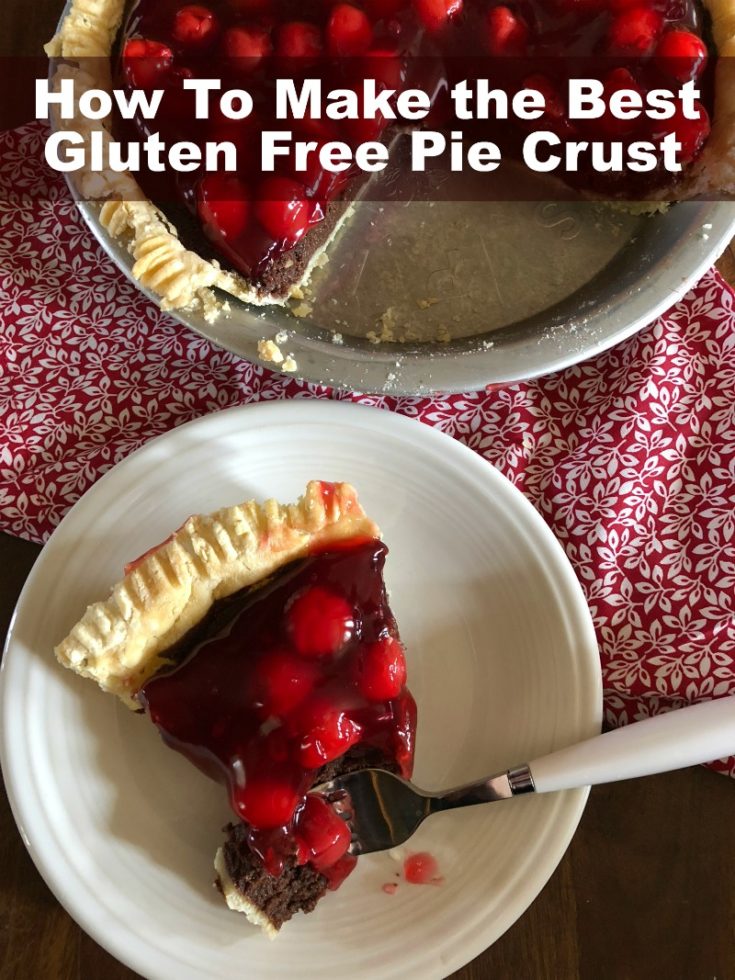
Flaky and delicious gluten free pie crust recipe.
Ingredients
- 2 cups Bob's Red Mill 1 to 1 Gluten Free Flour Blend
- 1/4 teaspoon salt
- 1/2 cup butter, cut into chunks
- 1/2 cup shortening
- 1/3 to 1/2 cup cold water
- 1 egg
- 2 teaspoons vinegar
Instructions
- In a bowl cut in butter and shortening into flour until it looks crumbly and butter is slightly larger than pea sized.You can use a pastry cutter or fork to do this. It should be a bit crumbly with the chunks of dough about pea size.
- In a small bowl combine egg and vinegar and add to flour butter mixture.
- Add water slowly to flour/butter mixture a few tablespoons at a time. Be careful because you do not want this to be too wet, that is why you add it a couple tablespoon at a time. Mix until it forms a dough.
- Divide the dough in half and form two round disks. Wrap in plastic wrap and refrigerate for at least 1 hour or until cold.
- Roll the dough out on parchment paper, plastic wrap, or a Silpat type mat. It will roll out better, you will use less flour, and it will make moving it to the pan easier.
- When rolling out the dough be patient with it. It has a slightly different texture than normal pie dough. You will have to do some pressing and patching of the dough. Be careful not to use too much flour when rolling out or it will get tough.
- Move the dough around occasionally when rolling out adding a little bit of flour to keep it from sticking to the parchment paper.
- Peel off one side of the parchment paper or plastic wrap and flip it into the pan. Peel off the parchment paper.
- If there are any cracks or torn spots use scraps of dough and press the dough together to repair it.
- Trim the edges and press or crimp them.
- Refrigerate the dough for at least 1 hour before baking or filling to bake. You want cold dough for baking to keep the crust flaky.
- Fill and bake according to your favorite pie recipes.

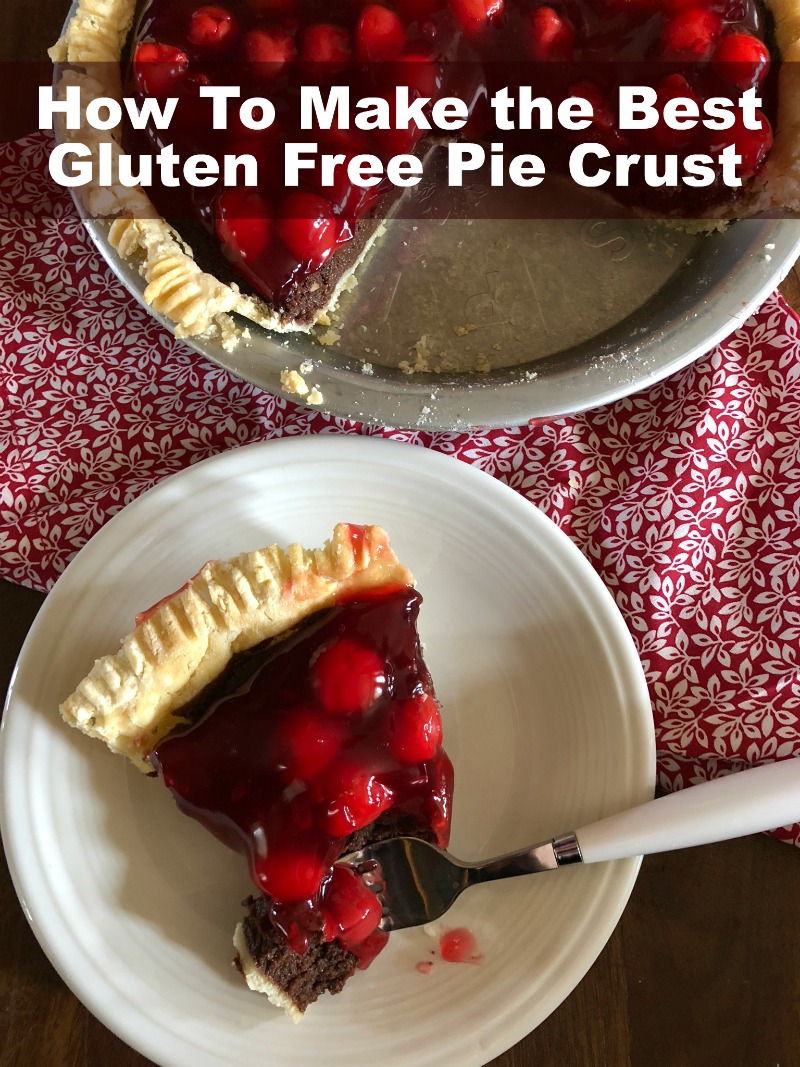
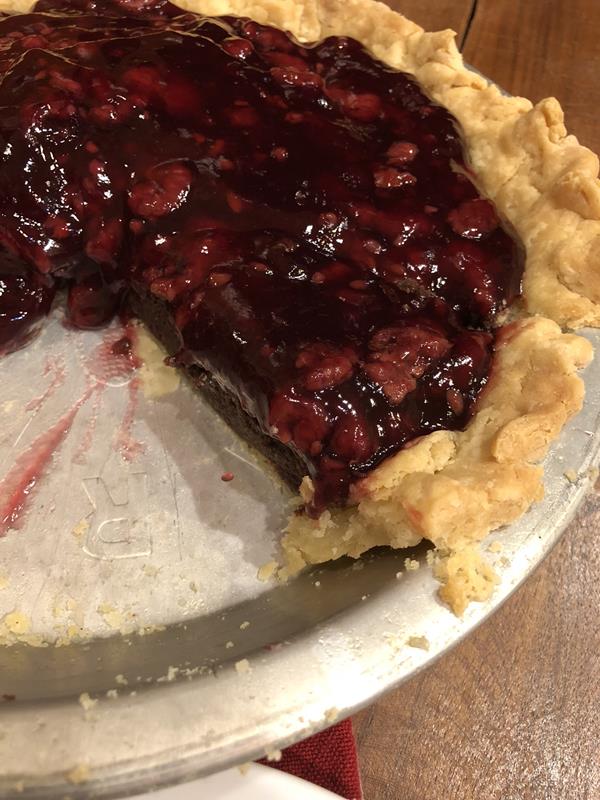
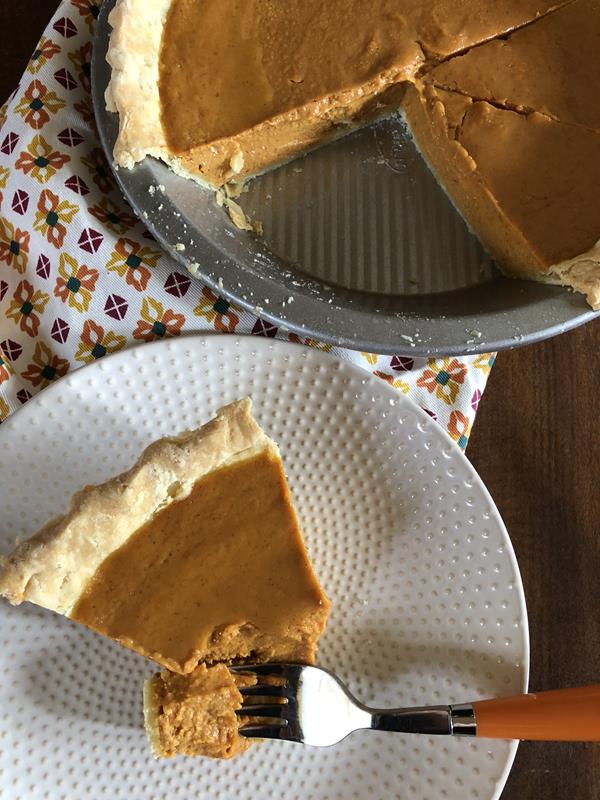
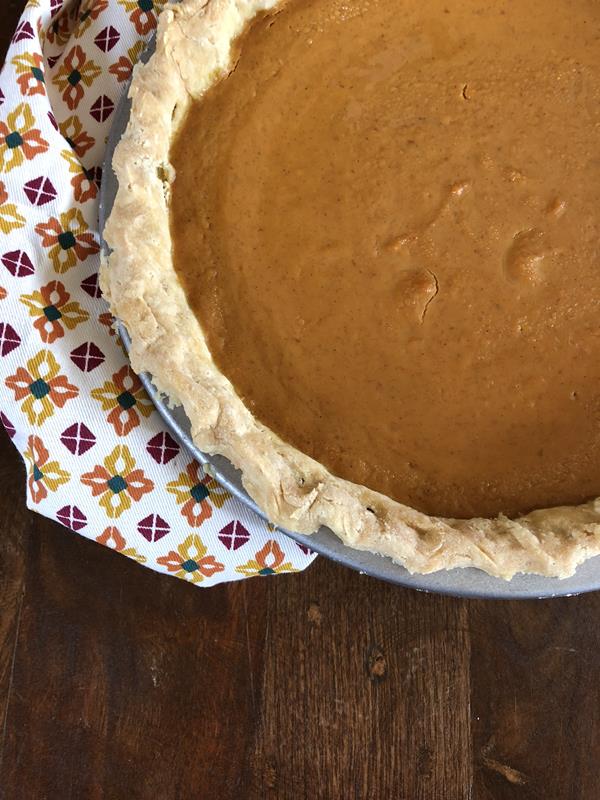
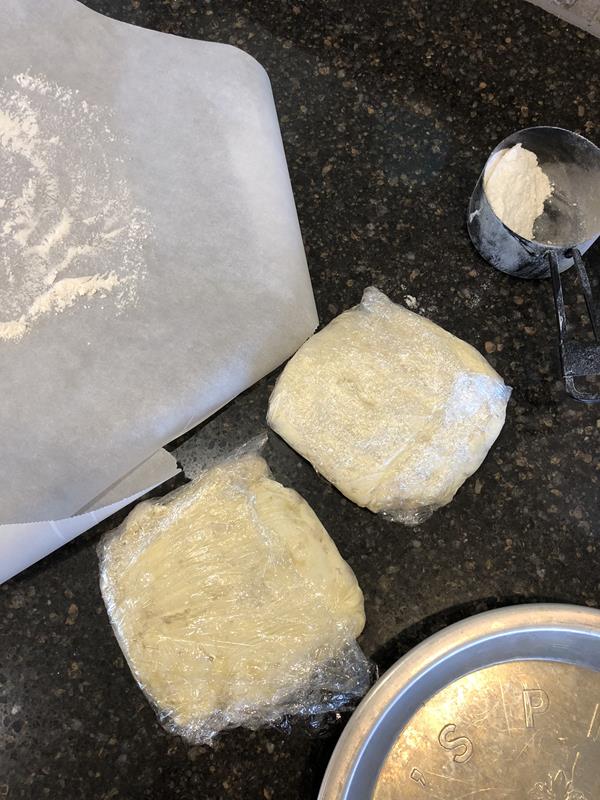
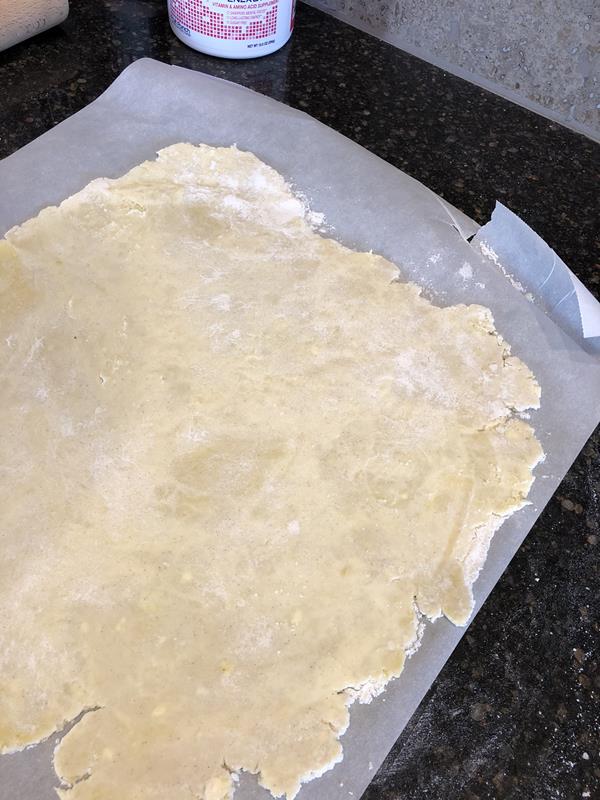
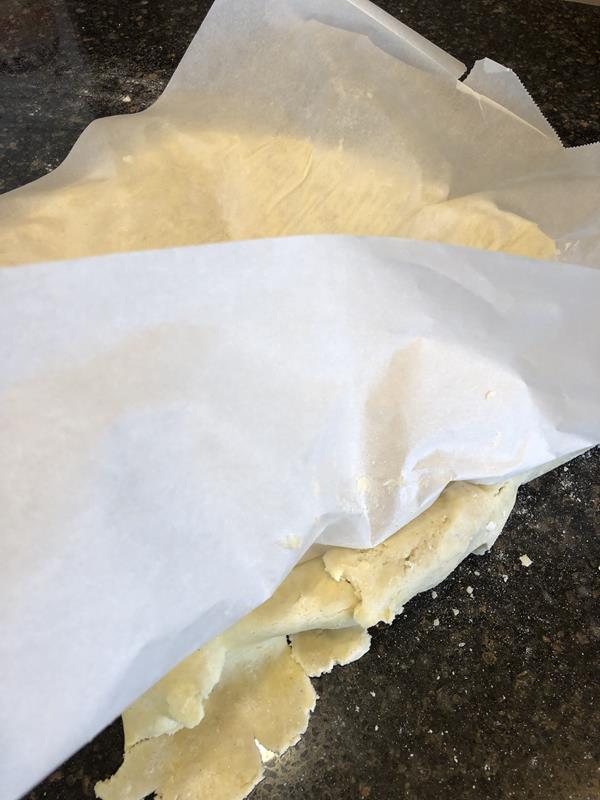
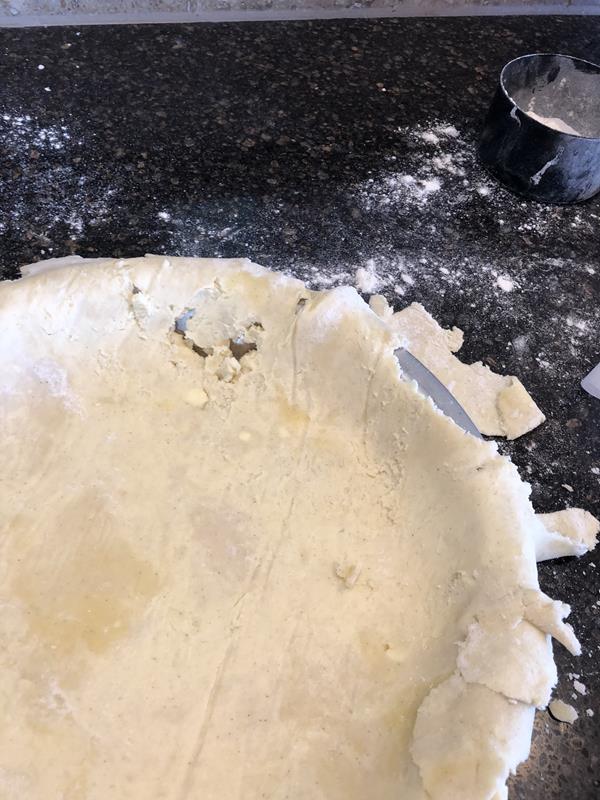
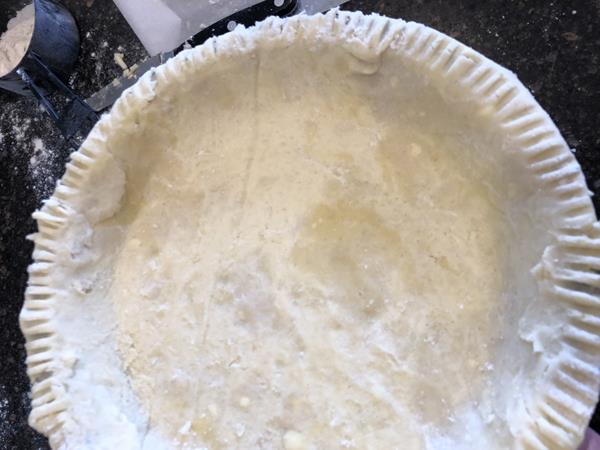
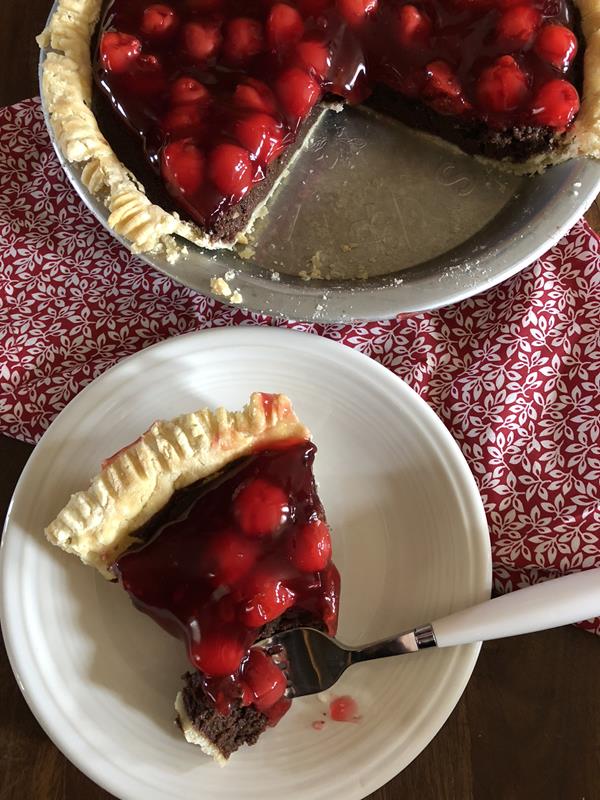
I followed this recipe exactly as written and my crust turned out beautifully. You could not tell it from regular pie crust. I would highly recommend this recipe for gluten intolerant people. Thank you Lynn!
Just wondering: What is the purpose of the vinegar? I presume you mean distilled white vinegar. May one use a flavored vinegar like rice or apple cider?
Yes, it is just basic white vinegar. If you only have apple cider vinegar I think it would work fine. I haven’t tried rice vinegar, but it would probably work as well. In gluten free baking a little bit of something acidic helps the texture. That is why lemon and citrus work so well in gluten free baked goods. It is also why I like using buttermilk in a lot of my gluten free baked goods. When I worked on getting a gluten free pie crust that I loved I found that a little bit of vinegar made a difference in the texture. I hope that helps.
This pie crust recipe is great. We used butter & lard a little more salt & added a little sugar to assist browning.
love your blog thanks i did not find an oven temp so baked at 365. Thanks Peggy
I am so glad that you enjoyed it! Thank you so much for letting me know. I will fix the oven temp. Have a great day!
Would this kind of crust work for quiche?
Yes, this would work for a quiche in place of a regular pie crust. I hope that you enjoy it.